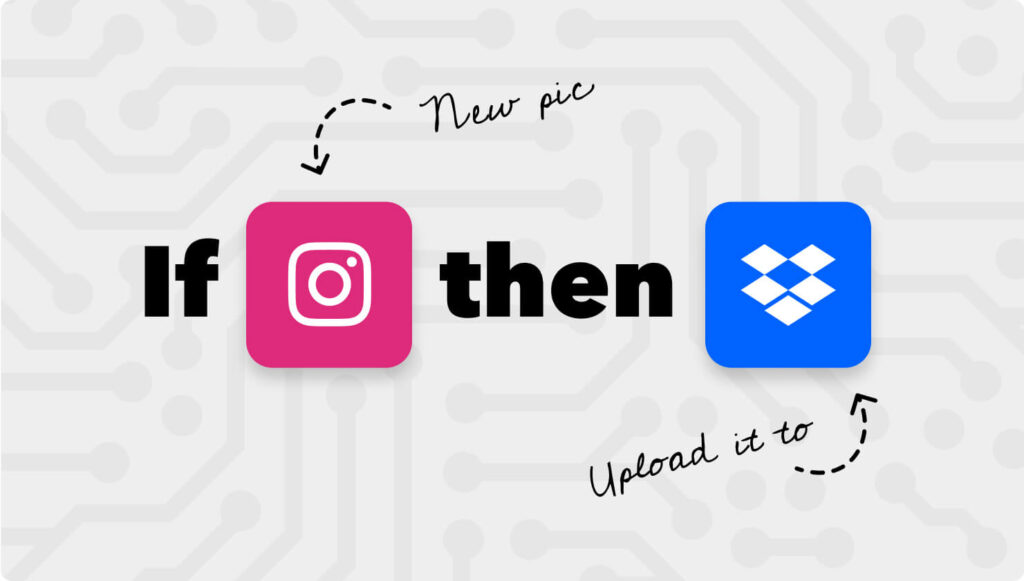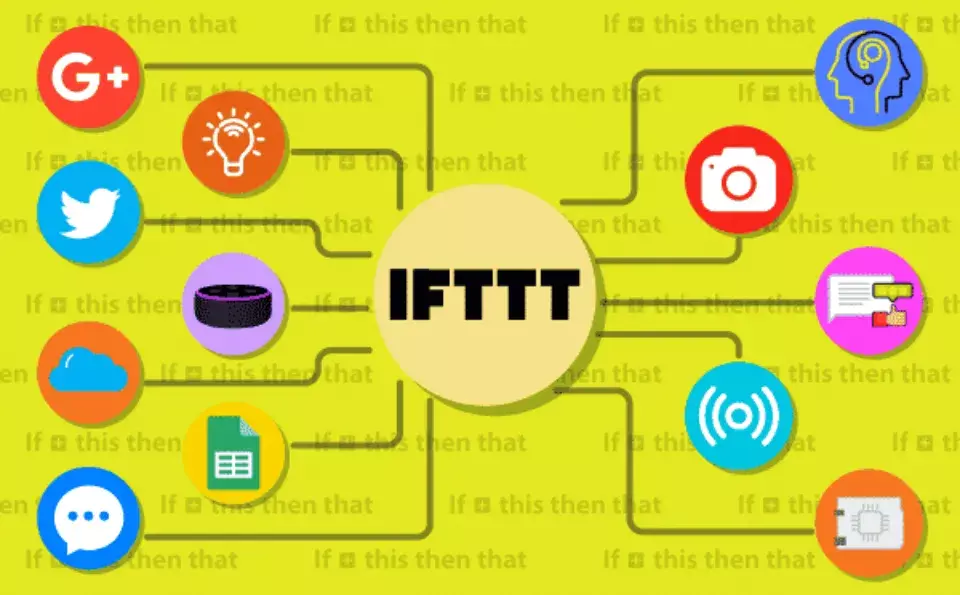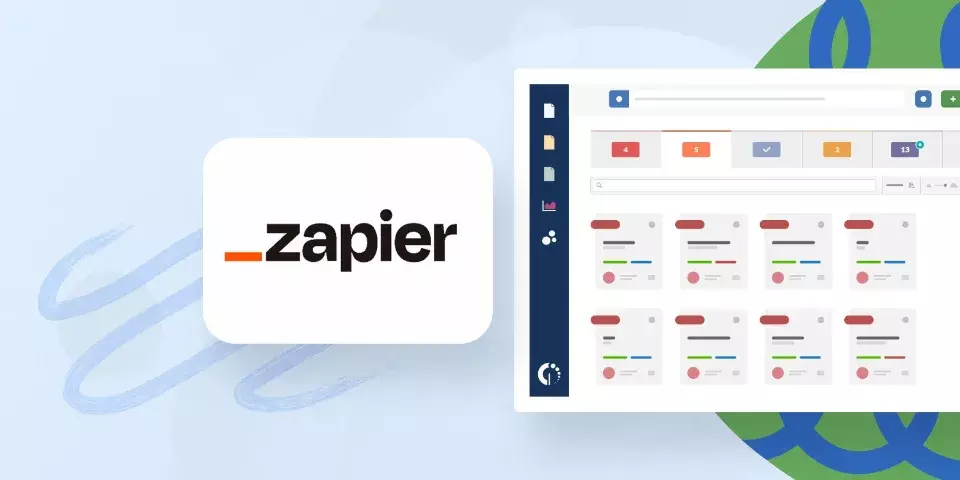
In the realm of enhancing both personal and professional efficiency, automation tools have evolved into indispensable assets. Zapier and IFTTT are two widely acclaimed options for automating tasks and processes.
Both platforms aim to simplify our digital lives by connecting apps and automating workflows.
In this comprehensive comparison, we'll explore the key features, differences, and use cases of IFTTT and Zapier to help you make an informed choice based on your automation needs.
What is IFTTT?

IFTTT, named after its logic structure "if this, then that," serves as an integration solution. Each integration created with IFTTT comprises two essential components: a trigger, initiating the integration, and an outcome, representing the desired effect.
For instance, if you establish an IFTTT integration, known as an applet, to automatically send you an email when a new task is assigned to you in a tool like Asana, the new task serves as the trigger, while the email constitutes the resulting outcome.
Key Features of IFTTT
Below are some key features of IFTTT.
1. Applet Creation
IFTTT revolves around applets, allowing users to design customized automation by selecting a trigger and specifying the corresponding action. The platform supports a wide range of services, from social media and productivity apps to smart home devices.
2. Ease of Use
IFTTT prides itself on its user-friendly interface, making it accessible to individuals with varying levels of technical expertise. Creating applets is a straightforward process, requiring minimal effort and no coding skills.
3. Wide Range of Services
IFTTT supports an extensive library of services, referred to as "Channels." These channels represent various apps and devices that users can connect to create versatile automation.
4. Free to Use
IFTTT offers a free plan that allows users to create and use applets without any cost. However, there are limitations in terms of the number of applets you can create and execute.
What is Zapier?
Zapier also employs the "if this, then that" logic to streamline actions across your workflow. It allows the creation of multi-step automation, referred to as Zaps, enabling a single trigger to initiate an entire sequence of actions.
While IFTTT spans integrations from smart home devices to the International Space Station, Zapier concentrates on connecting apps and tools commonly used by professionals and organizations.
Widely regarded as one of the most popular automation tools in the market, Zapier is versatile and supportive of various organizations and their departments.
Whether it's marketing teams, software development, or enterprises of varying sizes, Zapier's automation capabilities offer benefits to a broad spectrum of users, from large-scale enterprises to burgeoning startups.
If you are interested in this website, read our post on Zapier Reviews.
Key Features of Zapier

1. Zap Creation
Zapier's core functionality lies in creating Zaps. A Zap consists of a trigger event in one app that initiates one or more actions in another app. The platform's strength lies in its ability to handle more sophisticated workflows, making it suitable for businesses with diverse automation needs.
2. Multi-Step Zaps
Unlike IFTTT, Zapier allows users to build multi-step Zaps, enabling the creation of intricate automations involving multiple actions and conditions within a single Zap.
3. App Integration
Zapier boasts a vast library of supported apps, allowing users to connect a wide range of services and tools to create customized automation workflows.
4. Conditional Logic
Zapier provides users with greater control over their automations through the inclusion of conditional logic. Users can set conditions that determine whether specific actions within a Zap should or should not occur.
5. Paid Plans for Enhanced Features
While Zapier offers a free plan, it also provides paid plans with additional features, such as increased task limits, premium app access, and priority support, catering to the needs of more demanding users.
IFTTT vs. Zapier: What are the Differences?
So what are the differences between Zapier vs IFTTT?
1. Complexity of Automation
IFTTT: IFTTT is renowned for its simplicity, making it an excellent choice for users who require basic automation with uncomplicated triggers and actions.
Zapier: Zapier is more robust and caters to users with more intricate automation needs. The ability to create multi-step Zaps and implement conditional logic offers greater flexibility for complex workflows.
2. Ease of Use
IFTTT IFTTT excels in its user-friendly approach, making it accessible to users with minimal technical knowledge.
Zapier While still user-friendly, Zapier may have a steeper learning curve due to its more extensive capabilities, making it better suited for users comfortable with more complex automation concepts.
3. App Integration
IFTTT: IFTTT supports a wide range of services, and its simplicity makes it suitable for users who primarily need basic app integrations.
Zapier: Zapier's extensive app directory is a key strength, providing a more comprehensive ecosystem for connecting diverse apps and services.
4. Conditional Logic
IFTTT: IFTTT lacks robust conditional logic, limiting the customization options for users who require specific conditions for their automations.
Zapier: Zapier's inclusion of conditional logic provides users with more granular control over their automations, allowing for greater customization based on specific conditions.
5. Pricing
IFTTT: IFTTT offers a free plan with limitations on the number of applets and executions. Additional features may require subscription to IFTTT Pro, a paid plan.
Zapier: Zapier also offers a free plan with limitations. The platform's paid plans provide access to advanced features, making it suitable for businesses with higher automation needs.
Conclusion on IFTTT vs Zapier
Choosing between IFTTT and Zapier ultimately depends on your specific automation requirements and the complexity of the workflows you aim to create.
If simplicity and basic automations suffice, IFTTT's user-friendly interface and free plan may be suitable. However, for users with more complex automation needs, conditional logic, and multi-step workflows, Zapier emerges as a more robust solution.
Both platforms have their merits and cater to different user bases. Whether you're an individual looking to streamline

